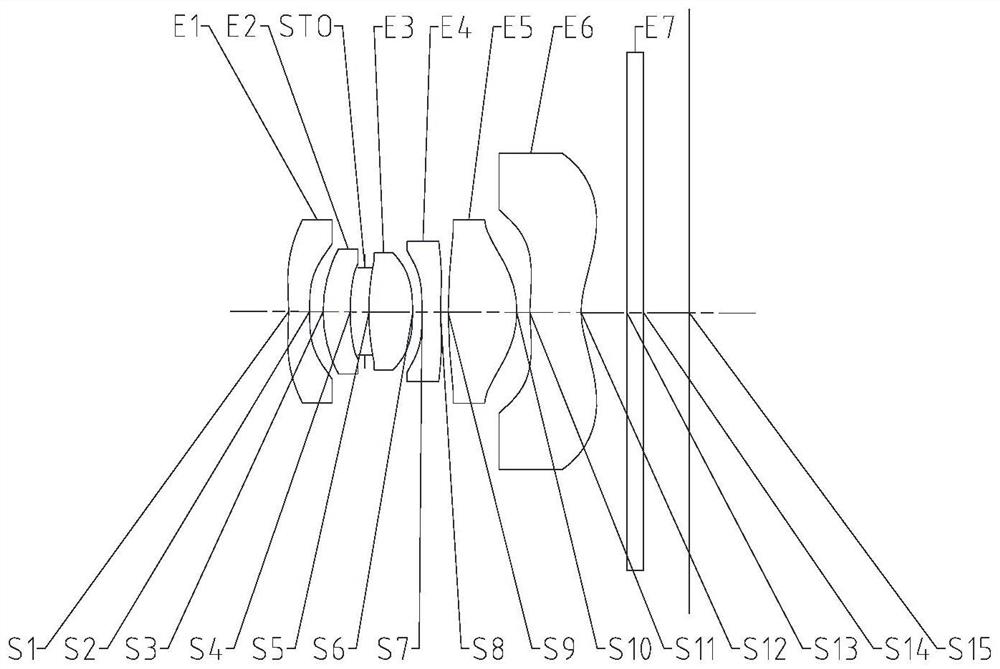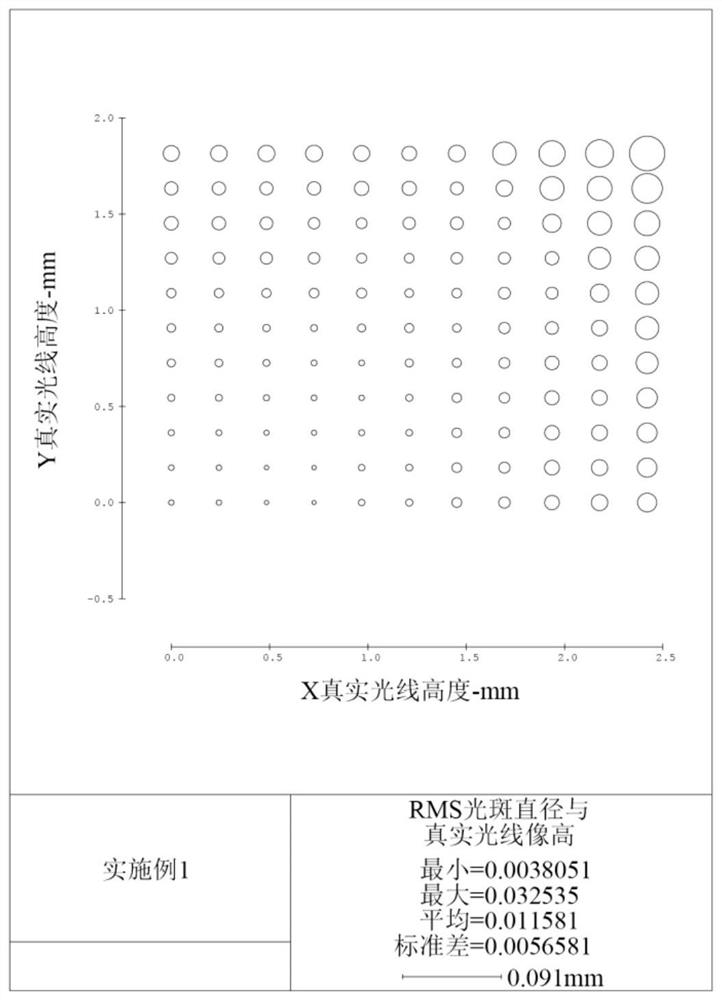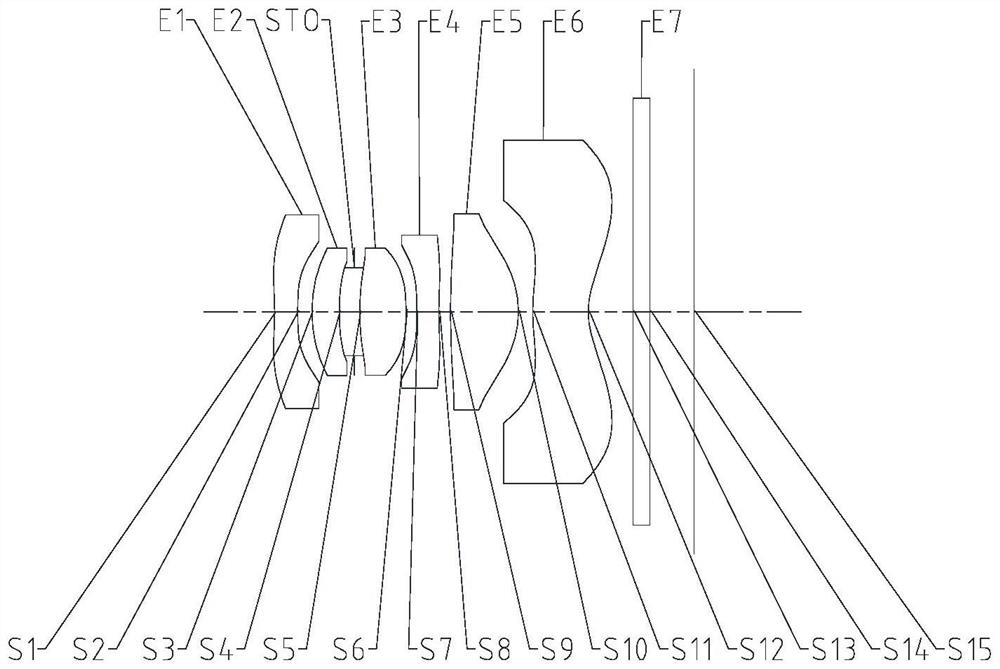Pick-up lens group
A camera lens and lens technology, which is applied in the field of camera lens groups, can solve problems such as inability to correct off-axis aberrations
- Summary
- Abstract
- Description
- Claims
- Application Information
AI Technical Summary
Problems solved by technology
Method used
Image
Examples
Embodiment 1
[0077] Refer to the following figure 1 with figure 2 An imaging lens group according to Embodiment 1 of the present application will be described. figure 1 A schematic structural diagram of the camera lens group according to Embodiment 1 of the present application is shown.
[0078] Such as figure 1 As shown, the imaging lens group according to the exemplary embodiment of the present application includes in sequence along the optical axis from the object side to the image side: a first lens E1, a second lens E2, a stop STO, a third lens E3, and a fourth lens E4 , the fifth lens E5, the sixth lens E6, the filter E7 and the imaging surface S15.
[0079] The first lens E1 has negative refractive power, its object side S1 is concave, and its image side S2 is concave. The second lens E2 has positive refractive power, its object side S3 is convex, and its image side S4 is concave. The third lens E3 has positive refractive power, its object side S5 is convex, and its image side...
Embodiment 2
[0099] Refer to the following image 3 with Figure 4 An imaging lens group according to Embodiment 2 of the present application will be described. In this embodiment and the following embodiments, for the sake of brevity, descriptions similar to those in Embodiment 1 will be omitted. image 3 A schematic structural diagram of the camera lens group according to Embodiment 2 of the present application is shown.
[0100] Such as image 3 As shown, the imaging lens group according to the exemplary embodiment of the present application includes in sequence along the optical axis from the object side to the image side: a first lens E1, a second lens E2, a stop STO, a third lens E3, and a fourth lens E4 , the fifth lens E5, the sixth lens E6, the filter E7 and the imaging surface S15.
[0101] The first lens E1 has negative refractive power, its object side S1 is concave, and its image side S2 is concave. The second lens E2 has positive refractive power, its object side S3 is c...
Embodiment 3
[0116] Refer to the following Figure 5 with Image 6 An imaging lens group according to Embodiment 3 of the present application is described. Figure 5 A schematic structural diagram of a camera lens group according to Embodiment 3 of the present application is shown.
[0117] Such as Figure 5 As shown, the imaging lens group according to the exemplary embodiment of the present application includes in sequence along the optical axis from the object side to the image side: a first lens E1, a second lens E2, a stop STO, a third lens E3, and a fourth lens E4 , the fifth lens E5, the sixth lens E6, the filter E7 and the imaging surface S15.
[0118]The first lens E1 has negative refractive power, its object side S1 is concave, and its image side S2 is concave. The second lens E2 has positive refractive power, its object side S3 is convex, and its image side S4 is concave. The third lens E3 has positive refractive power, its object side S5 is convex, and its image side S6 is...
PUM
 Login to View More
Login to View More Abstract
Description
Claims
Application Information
 Login to View More
Login to View More - Generate Ideas
- Intellectual Property
- Life Sciences
- Materials
- Tech Scout
- Unparalleled Data Quality
- Higher Quality Content
- 60% Fewer Hallucinations
Browse by: Latest US Patents, China's latest patents, Technical Efficacy Thesaurus, Application Domain, Technology Topic, Popular Technical Reports.
© 2025 PatSnap. All rights reserved.Legal|Privacy policy|Modern Slavery Act Transparency Statement|Sitemap|About US| Contact US: help@patsnap.com



